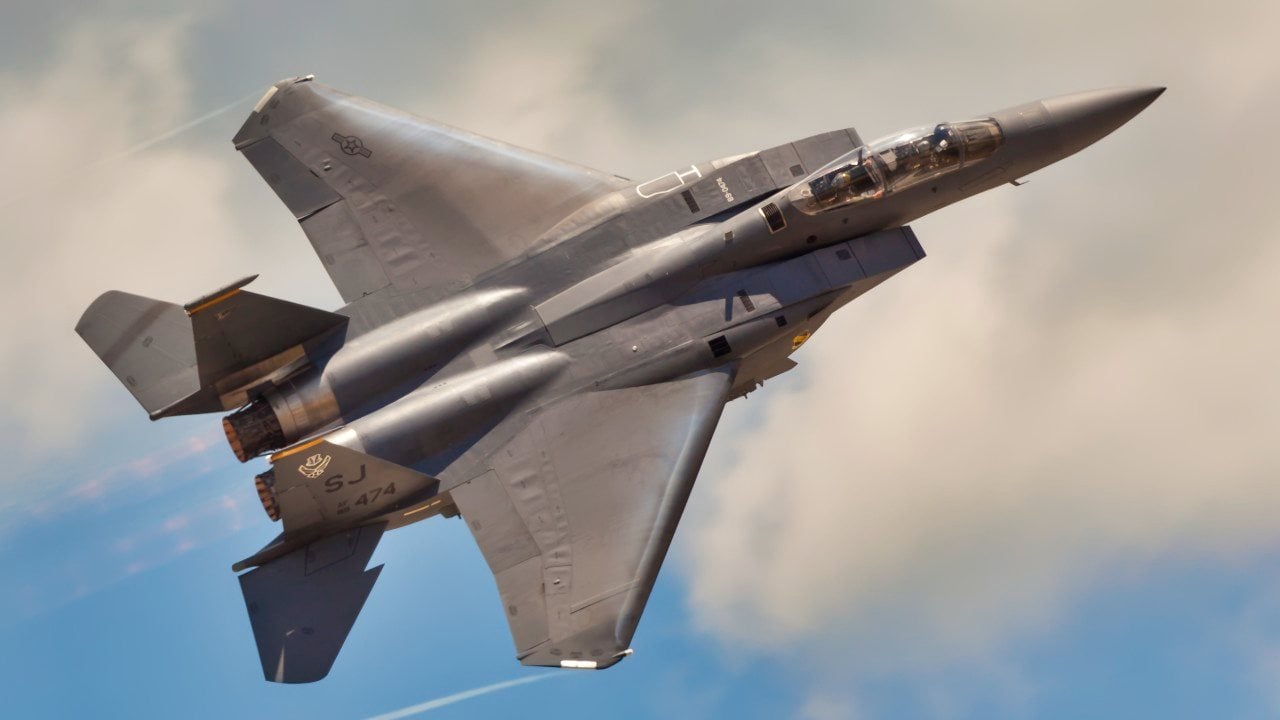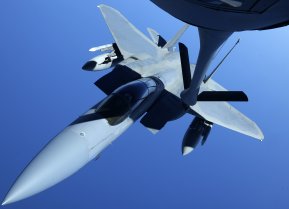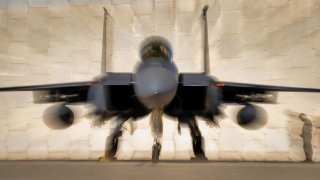F-15N: How U.S. Navy Aircraft Carriers Almost Flew the F-15 Fighter
In the late 1960s, the U.S. Navy faced challenges with its F-4 Phantoms and sought a new fighter to counter Soviet threats, leading to the development of the F-14 Tomcat. Simultaneously, the U.S. Air Force was developing the F-15 Eagle, an air superiority fighter with a stellar combat record. McDonnell-Douglas proposed a naval variant, the F-15N, with folding wings and reinforced landing gear for carrier operations.
Summary and Key Points: In the late 1960s, the U.S. Navy faced challenges with its F-4 Phantoms and sought a new fighter to counter Soviet threats, leading to the development of the F-14 Tomcat. Simultaneously, the U.S. Air Force was developing the F-15 Eagle, an air superiority fighter with a stellar combat record. McDonnell-Douglas proposed a naval variant, the F-15N, with folding wings and reinforced landing gear for carrier operations.

-However, the lack of compatibility with the Navy’s Phoenix missile system and the added weight led the Navy to stick with the F-14. Despite its promise, the F-15N was never produced.
F-15N Navy Eagle Profile
In the late 1960s, the U.S. Navy had a problem. They were losing jets at an alarming rate in the skies over Vietnam. The F-4 Phantom was simply unable to meet the Navy’s needs in that conflict. Adding to the Navy’s woes, the Soviet Union’s bombers started to carry long-range missiles specifically designed to attack carrier strike groups, and naval aviation had no response.
Grumman was commissioned to design a fighter/interceptor that became the F-14 Tomcat. While the Tomcat will doubtless go down as one of the best-known Navy fighters, it was nearly supplanted by another famous, highly capable jet, the F-15 Eagle.
A Brief Overview of the F-15
Like the Navy, the Air Force struggled in air combat over Vietnam. In the late 1960s, strategists were looking for a new air superiority fighter. Col. John Boyd’s Energy Maneuverability theory of dogfighting stressed thrust and maneuverability over top speed. Further, the MiG-25 unveiled by the Soviet Union in 1967 raised significant alarm among defense leaders. Its top speed and high-altitude requirements seemed to outclass the FX fighter currently in development. This led Air Force leadership to revise performance requirements for their new fighter.

Disagreements marked the redirected development process. Some called for a fighter/attack aircraft, while others wanted strictly an air superiority fighter. Concerns that the Navy’s VFAX program, which would go on to become the F-14, would be foisted on the Air Force finally consolidated agreement behind the air superiority concept. The result was the F-15 Eagle, an impressive jet that now has an air-to-air record of more than 100 kills with no losses.
Introducing the F-15N:
The Navy still faced struggles of its own. The F-14 was showing great promise, but Grumman was frantically trying to lower costs. One cost-cutting proposal was to use the engine originally designed for the failed F-111B, the TF-30. This engine’s known flaws included a tendency to stall or even to lose its fan blades. It was also underpowered relative to the size and weight of the F-14, which was packed with modern sensors and electronics to detect Soviet anti-ship aircraft at range.
Word of these struggles found its way to McDonnell-Douglas, designer of the Eagle, which sensed an opportunity. They proposed a naval variant of the Eagle. The F-15N would have folding wings better fit on the carrier deck, as well as reinforced landing gear and a tailhook for arrested landings. The lower unit cost of the Eagle would more than offset any price increase to make these changes and could generate big savings for the Navy.
The only major issue for the Navy was the lack of Phoenix missile compatibility. The AIM-54 Phoenix was designed to destroy large Soviet bombers far from the carrier before the bombers could use their own anti-ship missiles. The F-14 was designed to deliver this missile. Engineers at McDonnell-Douglas mocked up an F-15 carrying Phoenixs and even proposed adding the Tomcat’s AWG-9 radar. The only problem was how all that added weight would impact the Eagle’s performance.

In 1973, a Senate subcommittee reviewed the designs for the F-14 and the F-15N, with one member even proposing several F-15Ns be built to fly off against the F-14. But this was not to be – ultimately the F-15 remained strictly an Air Force aircraft. Upgrades to its engines made the F-14 a remarkable fighter in its own right, and both aircraft will go down in history as masters of their craft.
About the Author: Maya Carlin
Maya Carlin, National Security Writer with The National Interest, is an analyst with the Center for Security Policy and a former Anna Sobol Levy Fellow at IDC Herzliya in Israel. She has by-lines in many publications, including The National Interest, Jerusalem Post, and Times of Israel. You can follow her on Twitter: @MayaCarlin.
Image Credit: Creative Commons.


